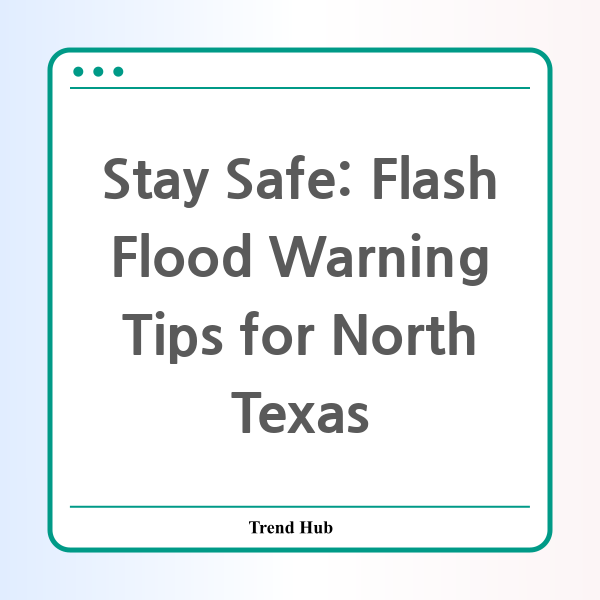* This website participates in the Amazon Affiliate Program and earns from qualifying purchases.

Are you prepared for the impact of a flash flood? With a flash flood warning currently in effect for North Texas, including areas like Dallas, Fort Worth, and Arlington, it's essential to stay informed and ensure your safety. Flash floods can develop quickly, posing significant risks to life and property.
The National Weather Service has issued a flash flood warning for Denton, Johnson, Parker, and Tarrant counties. As of 10:21 a.m. today, Doppler radar indicates thunderstorms producing heavy rain, with rainfall amounts between 0.5 and 1.5 inches already recorded. Flash flooding is either ongoing or expected to begin shortly.
Areas that may be affected include not only urban centers but also small creeks and streams, highways, streets, and other low-lying areas. It's critical to heed the advice: "Turn around, don't drown" when encountering flooded roads. Most flood-related fatalities occur in vehicles, so be aware of your surroundings and avoid driving on flooded roads.
Flash Flood Safety Guidelines
For those living or camping in flood-prone areas, immediate action is crucial. Here are some essential tips to follow:
- Seek Higher Ground: If you are in a low-lying area, find elevated terrain as quickly as possible.
- Follow Evacuation Orders: If local authorities issue evacuation orders, comply without delay.
- Disconnect Utilities: If time allows, disconnect utilities and appliances before you leave.
- Avoid Electrical Hazards: Stay away from basements or any area where electrical cords may be submerged.
- Don't Enter Floodwaters: Even small amounts of moving water can knock you off your feet, so avoid wading through floodwaters.
Driving Safely in Rainy Conditions
If you must drive during heavy rainfall, here are some proactive measures to enhance your safety:
- Use Headlights: Turning on your headlights improves visibility and alerts other drivers of your presence.
- Avoid Puddles: Steer clear of puddles or low areas where water may accumulate, as they can cause hydroplaning.
- Stay Away from Large Vehicles: Keep your distance from trucks and buses that can spray water, significantly reducing visibility.
- Know When to Turn Back: If you encounter a flooded road, turn around. Strong flash flood currents can sweep your vehicle off the road.
Understanding Hydroplaning
Hydroplaning occurs when a vehicle slides uncontrollably on wet roads due to a layer of water between the tires and the road surface. Factors contributing to hydroplaning include:
- Speed: Higher speeds increase the chance of losing traction.
- Water Depth: Even a thin layer of water can lead to hydroplaning.
- Tire Condition: Proper tread depth is crucial for maintaining grip on wet roads.
If you do find yourself hydroplaning, remember to:
- Ease off the accelerator to slow down.
- Turn into the skid to regain control.
- Allow the tires to reconnect with the road before straightening out.
- Brake gently if necessary, using standard brakes or pumping brakes in older vehicles.
As North Texas faces this flash flood warning, preparation and awareness are the keys to keeping yourself and your loved ones safe. Keep informed, stay alert, and prioritize safety over convenience during these hazardous weather conditions.
* This website participates in the Amazon Affiliate Program and earns from qualifying purchases.